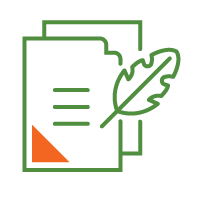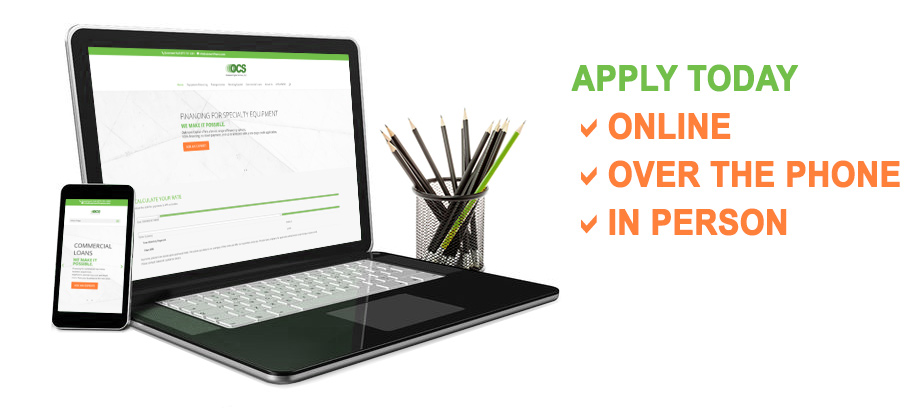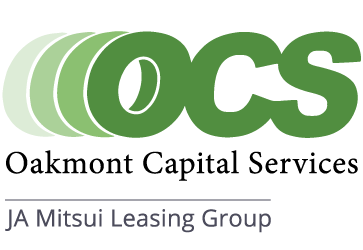How OCS is Using AI

Various sectors have revolutionized their operations with AI. For example, the medical field has adopted robots for surgical procedures, created personalized medicines, and performed imaging analyses. Another illustration of artificial intelligence is in the gaming world, where non-player characters (NPCs) navigate, interact with, and adapt their behaviors based on the main player’s actions. Based on these success stories and others, it’s clear that AI is here to stay.
As a result, a wind of change has swept through the finance sector. Financial service providers are using artificial intelligence to facilitate risk management, assist with customer identification, and perform asset valuations. However, ethical and social risks associated with AI are present when the technology is embraced without careful consideration.
At OCS, our borrowers benefit from this balance: a high-tech/high-touch financing experience. Glimpse behind the curtain and discover what Oakmont Capital Services has done to optimize our operations, bolster IT security, enhance customer support, and tailor marketing initiatives.
Pulling Back the AI Curtain on Daily Operations with Daryn Lecy, Sr. VP/COO
What benefits does AI offer the equipment finance industry?
The full range of potential benefits within our industry, as it relates to AI, are yet to be determined. In the past, when new technology emerged, there would be a gradual adoption rate with defined benefits. A good example is Remote Online Notary, which our customers can use to sign their documents from anywhere.
Currently and for the foreseeable future, AI presents itself without many parameters or limitations. Our sector’s initial use cases included underwriting, collecting performance history, and creating bots to reduce manual steps and processes. The equipment finance industry is focused on sharing and presenting the best use cases and practices regarding AI. This will help expand the adoption of various forms of AI.
Can you provide examples of specific AI applications or technologies Oakmont Capital Services uses to facilitate operations?
Artificial intelligence is embedded within some of our technology partner’s platforms, such as tools to complete identity and account verification and automated tools that perform virtual inspections. We also use AI comprehensively through our partner that has implemented machine learning, including:

We have also used generative AI to create templates for our policy and procedure documents and internal correspondence. We are continuously exploring new ways to leverage AI in our operations, and we are excited about the potential it holds for the future.
How does OCS stay up to date on our industry’s latest AI technologies and best practices?
Our team makes it a point to continuously research new technologies currently utilized in our industry. There’s also the consideration of AI solutions that have yet to cross over into our industry but could make the easy transition. For example, when we initiated Remote Online Notary (RON) in 2019 (pre-Covid), there was little to no product presence in equipment finance. Post-pandemic, there has been a strong adoption rate based on our promotion and recommendation of the product.
Uncovering potential opportunities for innovative software is often found after spending hours reading about solutions or examining case studies outlining how other companies use new tools. We always want to take advantage of product demos and see what applications are out there/how they may be valuable to OCS. If we can automate processes, eliminate redundancies, reduce fraud risks, or enhance the customer experience, why not? Due diligence is always at the forefront of our process, including all the necessary departments to vet options.
What are some potential pitfalls of utilizing AI, and what can organizations do to mitigate risk?
We should walk before we run, meaning verify AI process results before expanding too fast. I don’t recommend AI for the sake of having AI. Without extensive and necessary verification of results with repetitive testing, a company can put itself at high risk. To mitigate this pitfall, encourage multiple people to consider the pros and cons from many different angles. Lastly, performing large-scale testing will help reduce potential risks.
IT Evolution: The Rise of AI with Bill Schmidt, Director of IT
What are the biggest challenges associated with AI in equipment finance from an IT perspective?
From an IT perspective, the biggest challenges include:

Security
When considering OCH, or Optimal Control & Health, it’s important to remember that data security is at the core of our operations. This includes the customer’s personal information and the company’s proprietary information. We also need to ensure the accessibility and utilization of the data, including what a company generates, accesses, and maintains, to support our operations, team members, and partners. Ultimately, it comes down to balancing how we use the data for the business and the team’s knowledge. We are constantly improving our systems by integrating newer versions of AI with our models and workflows, demonstrating our unwavering commitment to data security.
Data Quality & Integrity
Whether you label it AI (Artificial Intelligence), ML (Machine Learning), BI (Business Intelligence), or use older data modeling terminology, AI ultimately comes down to the quality, integrity, and relevance of its underlying data and how it is viewed, modeled, abstracted, and employed by the user. The term GIGO (a.k.a. garbage in garbage out) is an apt acronym in data and IT circles. The crucial role of data professionals in building, verifying, and monitoring these systems determines their boundaries, level of relevance, usefulness, and, most importantly, how they are trusted.
Costs
There are apparent financial costs surrounding AI projects, including use, training, and maintenance. There are also opportunity costs of doing or avoiding projects. Implementing an AI tool just because it seems “cool” or because others are doing it may not be a sound business decision. If the solution has little or no payback concerning the quality of your team’s work, the level of customer care, or financial efficiency, it’s not worth the effort. All these factors must be considered when moving forward with an AI project.
AI has been around for years—the only difference being the acronym associated with it. Tools like ChatGPT have been getting headlines, but the hard questions still need to be asked: A.) Why are we doing this? or B.) Why aren’t we doing this? Although some projects are currently exploratory, others have a bigger use versus cost ratio. OCS’ award-winning IT team has several projects in the pipeline while constantly looking for the next best thing.
What measures is OCS taking to navigate these challenges?
Outside of straightforward security issues, OCS navigates challenges through its approach to projects. AI projects’ usefulness, appropriateness, and development rely on the 5 W’s of technology workstreams. These include: Why, Who, What, Where, When?
There are multiple levels and ways to build preventative measures into a system, and focusing on this task should be a priority. Besides that, we are always evaluating and supplementing security measures: protection from outside vendors, our security partners, and our core providers like Microsoft, who are continuously evolving.
What proactive steps have we taken to protect our customer’s and partner’s data?
Security and software vendors have been actively and aggressively reinventing how they provide security. By harnessing the power of AI in their tools, these vendors can efficiently analyze, observe, and make AI-informed conclusions, suggestions, and decisions. As a vendor-customer, OCS is now accessing these tools and heightening protective measures, instilling confidence in our stakeholders.
After JA Mitsui Leasing Group acquired Oakmont Capital Services in April 2024, we began to work closely with new compliance consultants and a new virtual CISO security provider. Maturing our security systems and implementing protection footprints is a result of and required for exponential growth, ensuring our stakeholders are part of this journey.
What AI success stories or case studies can OCS share?
Here are just a few examples of the tools OCS has implemented:

Since OCS is a Microsoft user, we acknowledge that implementing Copilot is a prime example of an AI success case because it’s a tool that includes several ChatGPT models.
Microsoft Copilot is an AI-powered assistant designed to enhance productivity and creativity across various Microsoft applications. It integrates with tools like Windows, Microsoft 365, Edge, and Bing to provide a seamless user experience. (Source: Microsoft Copilot)
Copilot is tethered to a Microsoft ‘tenant’ or customer. This enables OCS’ copilot to only look at our OCH data. This isolating approach means Microsoft can provide a more secure product to its customers while also ensuring that it is insulated from the world outside of any individual ‘tenant.’
Every solution provider must incorporate their best practices to improve their product. The other option? Become irrelevant. However, what truly matters is whether the label (e.g., AI) offers a better, more intelligent, more efficient, and more trustworthy answer or solution than its competitors (and predecessors) or when used independently.
Transformative AI for Marketing by Keara M. Piekanski, VP of Marketing & Communications
AI functionality has become more readily available and integrated into many marketing tools. Programs exist to assist with content development, curating videos, creating photos, managing administrative tasks, and more. Utilizing AI in daily activities significantly boosts efficiency by streamlining mundane tasks and fast-tracking other aspects of project completion, e.g., prompting AI to draft content or curate photos.
The marketplace is flooded with AI-focused tools, which can be overwhelming. However, our team’s approach is to focus on the practicality of these tools. We zero in on the free or low-cost options that not only help us achieve our marketing goals but also allow us to maintain control over our brand. Some of these tools are part of our daily toolkit, spanning different task verticals, including:
 Content:
Content:
ChatGPT is an open AI platform for ideating content. A content developer begins by entering a prompt and then edits the AI-generated copy, modifying it to ensure the final text is unique and incorporates OCS’ voice, tone, and style.
Grammarly, a reliable tool for spelling and grammar checks, comes with the added benefit of AI overlay that suggests alternative sentence structure.
 Video:
Video:
Raw Shorts enables organizations to create explainer videos from text, saving time and effort. Without the need for filming or complex editing, users can simply enter a storyline into the prompt, select a template, and let the AI-driven platform do the rest. The user-friendly drag-and-drop platform allows for further customization, and a vast library of stock videos and images is readily available.
 Images:
Images:
Photoshop (Adobe) is a design software program with built-in AI photo tools. It allows users to create scenes from scratch, insert a new background, improve image quality, and more.
 Design:
Design:
Canva is a design platform (marketed to “non-designers”) with an AI-powered design tool. Canva’s Magic Design™ uses prompts (words) to generate AI-inspired designs. It also offers a MagicWrite™ feature for copy and AI Photo Editing tools.
 Email:
Email:
Headline Analyzer (Co Schedule) is helpful for suggesting email headlines with a higher-than-average open rate. The user enters a draft headline copy, and the tool suggests edits based on a score from 1 to 100.
AI, a technology that enhances the human experience, is most effective when driven by a marketing professional who comprehends the objective, audience, and strategy of any task or campaign. This underscores the importance of the marketing professional’s role in AI integration. Our marketing team, comprising seasoned, mid-level, and junior-level professionals, must select AI tools that align with their roles and expertise. This is crucial for optimizing processes while preserving creativity, authenticity, and unique contributions. Given that many AI tools rely on prompts, it’s essential for the user to have sufficient knowledge in their field to input the correct information and generate usable, quality content.
The most significant limitation is the time to research, test, and integrate the “right” tools for our marketing efforts. Our team is merely scratching the surface of AI, and we look forward to collectively identifying additional opportunities to integrate AI-focused tools into our process. We’ll continuously aim to automate tasks hindering productivity and welcome solutions inspiring and encouraging creativity.
AI at OCS
OCS takes pride in our High-Tech/High-Touch approach, a cornerstone of our successful partner and customer relationships. As we look to the future, we look forward to identifying new tools that can further enhance the partner journey and customer experience. We’re already exploring ways to strengthen these interactions, and our journey with AI is just beginning. We’re committed to continually finding new ways to leverage AI to improve effectiveness, efficiency, and adaptability!
WHY CHOOSE US?
Better Rates and Flexible Terms
Over 20 Years of Experience
24 Hour Turnaround

